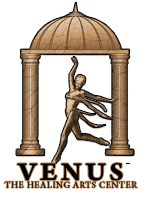A Lead screw is similar to a ball screw, but does not use circulating parts. A further difference is that it is less well-performing a precision ball screw due to greater friction. Typical ball screws make use of two surfaces rolling against each other to create motion; lead screws are constructed with rubbing surfaces. Lead screws are more cost efficient than ball screws however. Various labels that are often used for lead screws include translation screw or power screw. Lead screws are examples of linear actuators, changing radial motion into linear motion.
There are various types of lead screw, which are categorized by their threads. V-threads, square threads, acme threads and buttress threads are suitable for lead screws. Perhaps the primary concern opposing efficiency in lead screws is friction. This detrimental force should be lessened as much as possible at all times V-threads typically are not used for lead screws as a result of a significant amount of friction between the vs, but in some cases they are chosen. Square threads are typically more expensive to produce and are identified by the square shape of their threads. Surprisingly they have the lowest friction levels causing them to be the most efficient type of lead screw.
The acme thread is angled by a small amount. The angle is easy to cut into the screw, causing the acme thread to be fairly easy to produce when compared with square threads. As a result of this they are less expensive while there is a higher efficiency loss due to friction due to the angular shape. A further design of lead screw is the type that features a buttress thread. This thread is triangular a design that is easier to implement than that with a square thread. Surprisingly the buttress thread is no more complicated to produce than an acme thread. The most significant downside of a buttress thread is its inability to be back-driven.
There are some issues that are created by friction produced by a lead screw. This effect causes an increase in heat energy and can be responsible for heat issues in the mechanism, which is more common if the apparatus is used without cease. Some types of lead screws can have their motion reversed, an ability that depends directly on ease of motion between the nut and the screw, the specific angle of the thread and the helix angle of the thread. In general lead screws feature self-locking, so that they can only move in some directions. It is generally important that enough lubrication is applied to a lead screw, although this can only be calculated based on the amount of friction that is generated and the type of screw.
You can very well find lead screw here or here: lead screw.
